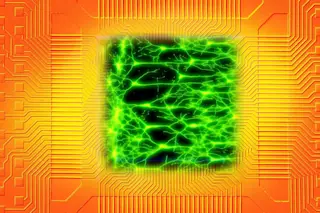Alec Nielsen typed a few lines of code on his laptop, and a circuit schematic appeared in another window. Unlike most people who design circuits, however, he wasn’t making a computer chip. He was designing strands of DNA.
Nielsen and a growing number of researchers want to hijack the biochemical processes of living cells to turn them into microscopic cyborgs — part living things, part programmable machines. These cellular cyborgs could one day step in when your body falls short in its attempts to hunt cancer cells, tamp down overactive immune responses or adjust the gut microbiome.
Key to this vision is controlling how cells sense and respond to their environments, says Christopher Voigt, a bioengineer at MIT and co-founder of Asimov, a biotech startup that Nielsen leads. In nature, cells do this by turning on different genes at different times under different conditions. All this activity is controlled by ...















